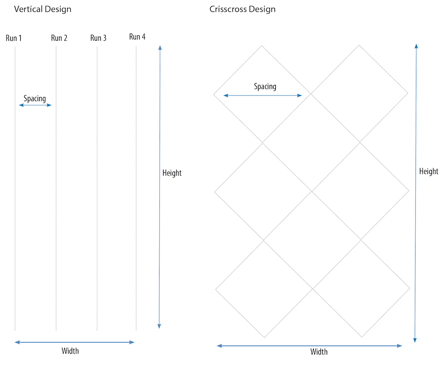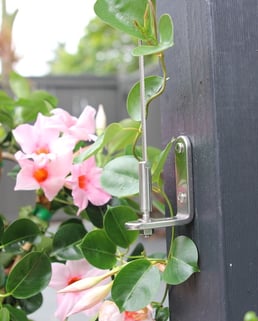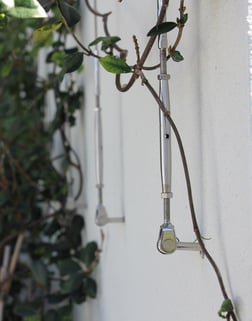
Living vertical gardens are very much on trend at the moment. Living walls can be found adorning walls in big cities such as New York and London, making statements to anyone who walks by them. Although they look amazing from a distance, living wall designs are all the more impressive up close, when you realise the wall is alive and the plants decorating the building are growing.
What is a living wall?
Living green walls, also known as vertical gardens or eco walls, are made up of plants that are planted in such a way that allows them to grow and decorate a concrete, brick or any type of wall.
These garden designs are perfect for landscaping in your own home, as they are easy to install and yet they look extremely impressive.
The advantages of living green walls
There are many benefits to having a living wall. First of all, they can be installed in small spaces. So if you have a courtyard in your home, which you previously thought was too small to house a garden, you can think again. A wall filled with vibrant plants can freshen up the courtyard and bring some plant life into the area without taking up much-needed space.
In the hot Australian heat, trellis & vertical gardens can have other advantages too, keeping the space cool. A brick wall that previously reflected heat from the sun will now be absorbed into the plants on the wall, keeping the space cool. As a plus, they can also help to insulate the wall in the wintertime, keeping the inside of your home warm.
You can also extend the wire to overhead, creating an area in which vines can grown and create a canopy, giving protection from the sun whilst still allowing the summer heat to escape.

Your neighbours will thank you for installing a living green wall into your garden too. Why? Adding follage & plants have been known to drastically reduce noise levels, making them perfect for urban environments where we all seem to live in close proximity.
And that’s not all. Plant walls have many environmental benefits too. They don’t consume much water and allow for efficient irrigation, making them the perfect outdoor design for a water-starved country such as Australia. Plus, they also assist in improving the air quality of your backyard space.
With so many benefits, it’s easy to see why vertical gardens are perfect for residential homes.
The different types of systems
There are two main types of living green wall systems – trellis systems and cable and rope wire setups.
The former uses lightweight panels that are mounted on to walls and are good for use where there isn’t much space to let a climbing plant grow. This makes them suitable for freestanding structures where the panels can be easily mounted, as space might be limited in certain areas.
Rope wire and cable systems consist of different kit parts that are put together to form a space for a vertical garden to grow. Perfect for large spaces, the kit includes steel cables, anchors, spaces, wire trellises and other bits and bobs of equipment. Using cross clamps to connect the systems, the cabling is flexible and is able to create various patterns and be installed in all different sized areas.
Installing and maintaining wire systems
Wire systems are installed using turnbuckles and anchors, which can have cables inserted that can then be tightened and adjusted depending on how the plants are growing and what system they need.
Sample Wall Designs

Climbing plants are perfect for living green walls because they are easy to care for, and these plants love wire trellis systems for their growth. Using climbing plants, only minimal maintenance will be needed, such as infrequent pruning and perhaps looking at the tension of the wire systems occasionally.
However, to install a pre-grown panel, a lot of effort needs to go into the setup. For example, the living walls need to be grown for 6 months to a year ahead of the installation, before they are installed. Without this growth, your panels will look rather empty. You may also need to install a waterproof membrane on the wall if you are installing the panels onto metal or wood structures. Often a fertiliser loop is also recommended to keep the plants in good shape. Overall, wall panels need quite a bit more maintenance than cable systems.


What plants should I choose?
The fun part of installing this type of garden in your home or garden is choosing the plants to grow on the wall. You either want climbing plants or plants that have a supporting structure, so that they can easily survive.
If you are planting your new garden outside, your plants should be able to tolerate heat and wind, and keep in mind that if you are installing climbing plants, they might take up to five years to completely cover your wall.
Before installing your cabling system, or other support network, you will need to consider the type of plants you plan to use. For example, a quick growing plant will need to be planted across a bigger area than a slow-growing species.
We hope this guide will help sway you into doing a DIY job for your home. Trust us, you won’t regret it!
Other articles you may be interested in - Sample DIY Project






